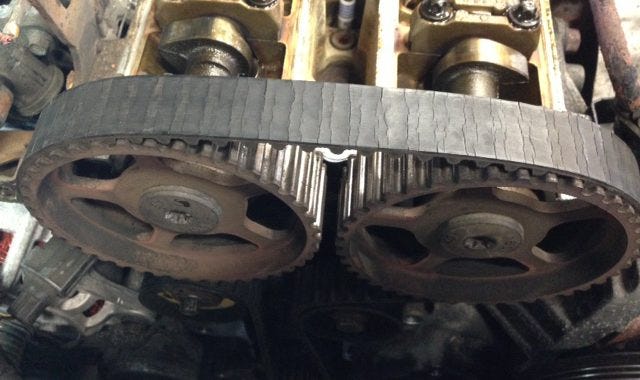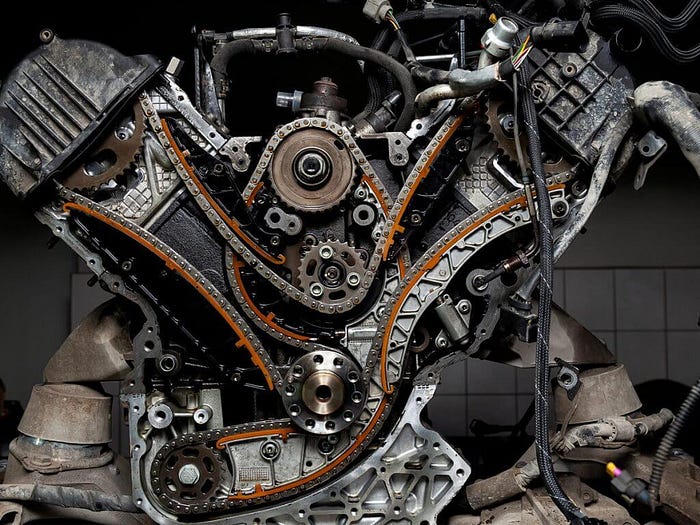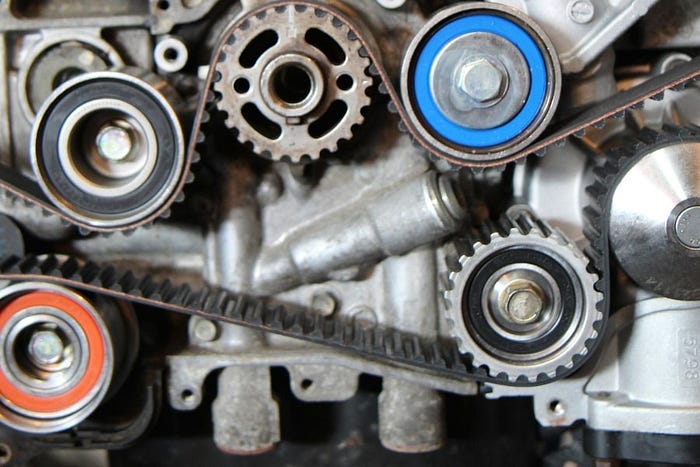
When it comes to car maintenance, one component that often requires attention is the timing belt. The timing belt plays a crucial role in the internal combustion engine, ensuring that the crankshaft and camshaft rotate in perfect synchronization. Over time, the timing belt can wear out and may need to be replaced to prevent potential engine damage. In this comprehensive guide, we will discuss everything you need to know about timing belt replacement costs, including factors that affect the cost, warning signs of a failing timing belt, and the average cost of replacement for different vehicles.
Understanding Timing Belts and Timing Chains

Before we dive into the details of timing belt replacement costs, it’s important to understand the difference between timing belts and timing chains. Both serve the same purpose of synchronizing the rotation of the engine’s crankshaft and camshaft, but they are made of different materials. Timing belts are typically made of rubber, while timing chains are made of metal.
How Long Does a Timing Belt Last?

The lifespan of a timing belt varies depending on the vehicle manufacturer and driving conditions. In general, timing belts are designed to last between 40,000 to 100,000 miles or approximately 7 to 10 years. However, it’s essential to consult your vehicle’s owner’s manual for the manufacturer’s recommendations specific to your car.
When Should You Replace Your Timing Belt?

To prevent potential engine damage and costly repairs, it’s crucial to replace your timing belt within the manufacturer’s recommended interval or mileage. It’s important to note that some vehicles use timing chains instead of timing belts, which may not require replacement unless there is a specific issue. Consulting your mechanic or referring to your owner’s manual will provide you with the necessary guidance on when to replace your timing belt.
Warning Signs of a Failing Timing Belt

Recognizing the warning signs of a failing timing belt can save you from a potential breakdown or engine damage. Here are some common indicators that your timing belt may need replacement:
1. Rough Engine Idling: If your engine is shaking or idling roughly, it could be a sign of a worn-out timing belt.
2. Unusual Engine Noises: A rattling noise and choppy engine sound may indicate a loose or damaged timing belt.
3. Burning Rubber Smell: If you notice a burning rubber smell coming from the engine bay, it could be a sign of a deteriorating timing belt.
4. Increased Engine Strain: An overworked engine that feels sluggish or struggles to perform could be a result of a failing timing belt.
5. Engine Failure to Start: A broken timing belt can cause your engine to fail to start altogether.
If you experience any of these warning signs, it’s essential to have your vehicle inspected by a qualified mechanic to diagnose the issue accurately.
Factors Affecting the Cost of Timing Belt Replacement

The cost of timing belt replacement can vary depending on several factors. Here are some key factors that can influence the overall cost:
6. Vehicle Make and Model: The make and model of your vehicle play a significant role in determining the cost of timing belt replacement. Some vehicles have more complex engine designs, requiring more labor and specialized tools for the replacement process.
7. Labor Costs: The cost of labor can vary depending on the mechanic’s hourly rate and the complexity of the timing belt replacement. Emergency or urgent appointments may also incur additional charges.
8. Parts and Additional Repairs: In addition to the timing belt, other components such as the water pump may need replacement during the timing belt replacement process. The cost of these parts can significantly impact the overall cost.
9. Geographical Location: The cost of living and market competition in your area can influence the pricing of timing belt replacement services. Urban areas or regions with a higher cost of living may have higher service costs.
Average Timing Belt Replacement Cost for Different Vehicles

The average cost of timing belt replacement can vary depending on the vehicle make and model. Here are some examples of the average cost range for timing belt replacement:
Vehicle Make Average Cost Range Honda Odyssey $650 — $985 Honda Accord $465 — $724 Honda Civic $280 — $780 Honda Pilot $615 — $1,035 Subaru $500 — $1,240 Acura $410 — $919 Audi A4 $750 — $950 Please note that these are average cost ranges and can vary based on the factors mentioned earlier.
Finding a Reliable Mechanic for Timing Belt Replacement

When it comes to timing belt replacement, it’s crucial to find a reliable and experienced mechanic to ensure the job is done correctly. Here are some steps to help you find a trustworthy mechanic:
10. Ask for Recommendations: Seek recommendations from friends, family, or trusted automotive professionals who have recently had their timing belts replaced.
11. Check Online Reviews: Read online reviews and ratings of local mechanics to get an idea of their reputation and quality of service.
12. Verify Certifications and Experience: Ensure that the mechanic is certified and has experience working on your specific vehicle make and model.
13. Request Detailed Quotes: Obtain quotes from multiple mechanics, including breakdowns of parts and labor costs, to compare and make an informed decision.
DIY Timing Belt Replacement: Is it Worth the Risk?

Some car owners may consider replacing the timing belt themselves to save money on labor costs. However, timing belt replacement is a complex and labor-intensive process that requires specialized tools and technical expertise. Unless you have extensive experience and knowledge in automotive repair, it’s generally recommended to leave timing belt replacement to professional mechanics. DIY attempts can lead to costly mistakes or potential engine damage.
Tips to Save Money on Timing Belt Replacement

While timing belt replacement is an essential maintenance task, it doesn’t have to break the bank. Here are a few tips to help you save money on timing belt replacement:
14. Compare Quotes: Obtain quotes from multiple mechanics to find the best price without compromising on quality.
15. Timing Belt Kits: Consider purchasing timing belt kits that include all the necessary components for replacement, including the water pump, tensioner, and other related parts. These kits can often be more cost-effective than purchasing individual parts.
16. Bundle Repairs: If you have other scheduled maintenance or repairs, consider having them done concurrently with the timing belt replacement to save on labor costs.
17. Regular Maintenance: Follow the manufacturer’s recommended maintenance schedule to prolong the lifespan of your timing belt and minimize the risk of premature failure. Thanks for giving your valuable time to read this blog, If you have a Ford car and In case, you are looking for a trusted ford service center then With the user-friendly Service My Car website, Ford owners can effortlessly book Ford service appointments, track service progress, and access valuable resources.
Conclusion
Timing belt replacement is an essential maintenance task that ensures your engine operates smoothly and efficiently. While the cost of timing belt replacement can vary based on several factors, including the vehicle make and model, labor costs, and additional repairs, it is an investment in the longevity and performance of your vehicle. By understanding the warning signs of a failing timing belt and finding a reliable mechanic, you can proactively address any issues and avoid costly engine damage. Remember, when it comes to timing belt replacement, it’s always better to be safe than sorry.
